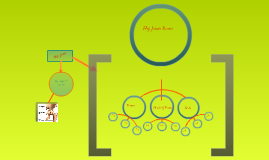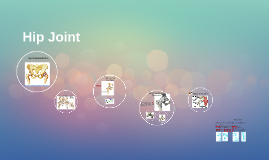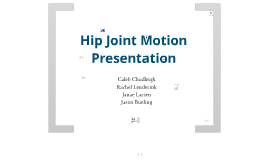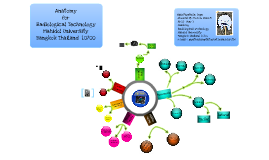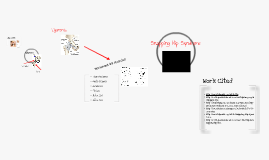hip joint
Transcript: Major ligaments of the hip joint Origin: Pectineal line of pubis Insertion: Pectineal line of femur Action: Adducts and flexes thigh Gemelli (superior and inferior) Gluteus minimus Sartorius Origin: anterior surface of sacrum Insertion: greater trochanter of femur Action: Laterally rotate extended hip and abduct flexed hip Origin: Ilium Insertion: anterior surface of greater trochanter of the femur Action: Abduct and medially rotate hip Caleb Chudleigh Rachel Lenderink Janae Larsen Jason Bueling Obturator Externus Origin (superior): Ishial spine Origin (inferior): Ishial Tuberosity Insertion: medial surface of greater trochanter of femur Action: Laterally rotate extended hip and abduct flexed hip The Acetabular Labrum Gracilis Hip Lateral Rotators Hip flexors Origin: iliac spine Insertion: superior part of medial tibia Action: Flexes, abducts, and laterally rotates thigh at hip joint. Acetabulum – forms socket of hip joint -Ilium -Ischium -Pubis Head of femur Articular cartilage Origin: Ishial Tuberosity Insertion of Semitendinosus: medial surface of superior tibia Insertion of Semimembranosus: Posterior part of medial condyle of the tibia Action: Extends hip; flexes knee and rotates it medially Iliopsoas Adductor Brevis Origin: lateral border of ishial tuberosity Insertion: between the greater and lesser trochanter of the femur Action: Laterally rotates hip Type of Joint Origin: Inferior body of pubis Insertion: proximal femur Action: Adducts thigh and, to some extent, flexes it Origin: obturator foramen and membrane Insertion: greater trochanter of femur Action: Laterally rotates hip fibrous capsule Pectineus Adductor longus Adductor brevis Adductor magnus Gracilis Quadratus Femoris Biceps Femoris Hip Joint Motion Presentation Moore, Keith L.. Clinically Oriented Anatomy. Baltimore, Maryland: Williams & Wilkins, 1992. Print. Semitendinosus and Semimembranosus Piriformis Gluteus maximus Semitendinosus Semimembranosus Biceps Femoris Works Cited Hip Abductors Tensor Fasciae Latae Iliofemoral ligament Ishiofemoral ligament Pubofemoral ligament Ligament of head of femur Origin of long head: Ishial Tuberosity Origin of short head: femur Insertion: lateral side of head of fibula Action: Extends hip, flexes knee and rotates it laterally Adductor longus Origin: Inferior body of pubis Insertion: middle third of femur Action: Adducts thigh Flex Extend Adduct Abduct Rotate Circumduct Obturator internus Gluteus medius Gluteus minimus Origin: Inferior ramus of pubis and Ishial Tuberosity Insertion: Medial femur Action: Adducts thigh Piriformis Obturator internus Obturator externus Gemelli, superior and inferior Quadratus femoris Adductor Magnus Gluteus maximus Origin: Inferior body of pubis Insertion: Superior part of medial tibia Action: Adducts thigh, flexes knee and helps rotate it medially. Iliopsoas Psoas Iliacus Tensor Fasciae Latae Sartorius Rectus Femoris Bones involved Movements possible Hip Adductors Circumduction Origin: Anterior Inferior iliac spine Insertion: base of patella Action: flexes hip and extends leg at knee THE END Origin: Ilium, including iliac crest and dorsal surface of sacrum and coccyx Insertion: gluteal tuberosity of femur and iliotibial tract Action: extends hip; assists in lateral rotation of the femur; used for climbing stairs and jumping Origin: iliac spine and iliac crest Insertion: Lateral Condyle of the tibia Action: flexes hip, abducts and medially rotates hip Origin: obturator membrane and surrounding bone Insertion: medial surface of greater trochanter of femur Action: Laterally rotate extended hip and abduct flexed hip Composed of the Psoas Major and the Iliacus Origin of Psoas: Sides of T12 to L5 vertebrae and intervertebral discs between them Origin of Iliacus: iliac crest Insertion of both: Lesser Trochanter Action: flexing thigh at hip joint and stabilizing hip joint Pectineus Hip extensors Joint cavity Made of fibrocartilage Deepens the hip socket Attached to bony rim of the Acetabulum Helps prevent hip from dislocating Gluteus medius Distinguishing features of a synovial joint Ball and socket joint Origin: ilium Insertion: greater trochanter of femur Action: Abduct and medially rotate hip Rectus femoris






